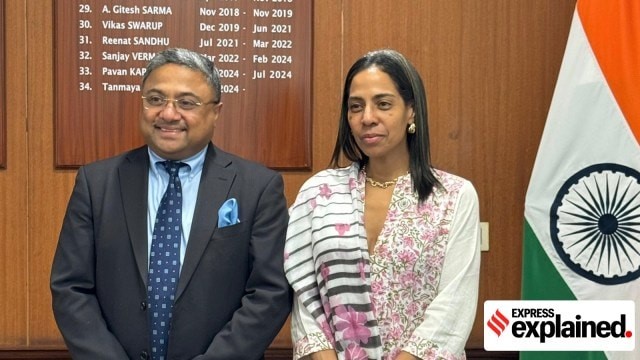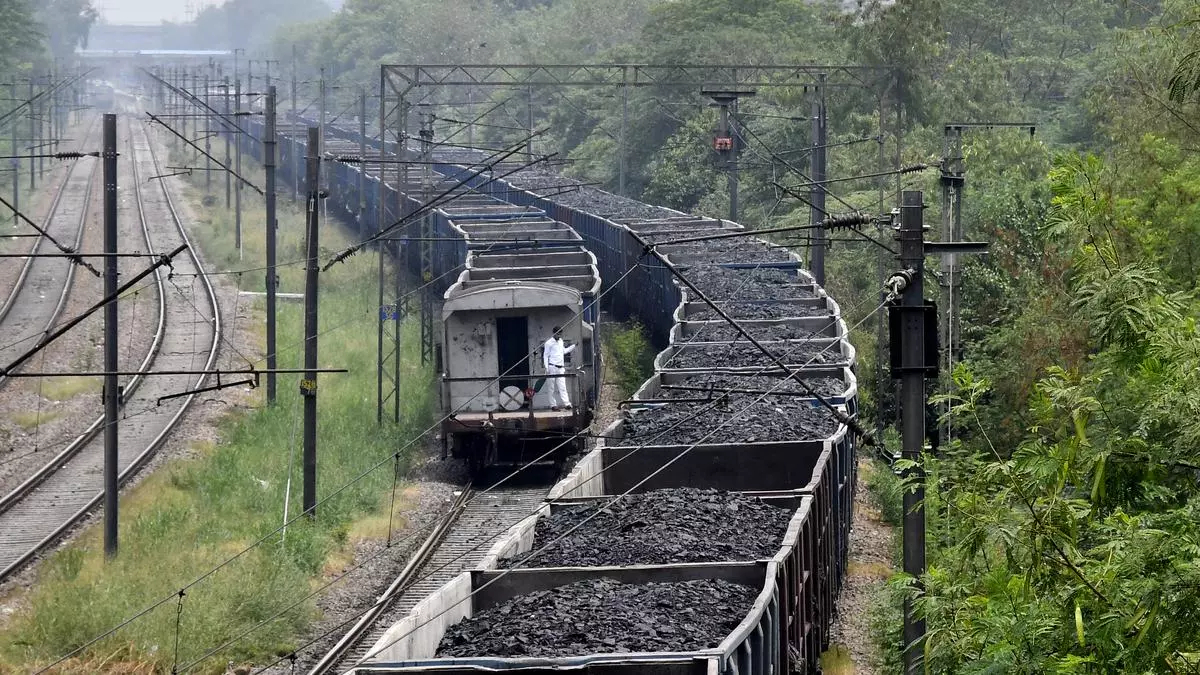India’s Deep-Sea Mineral Exploration in the Indian Ocean

- 05 Oct 2025
In News:
India has achieved a major milestone in deep-sea exploration by signing a new 15-year contract with the International Seabed Authority (ISA) for the exclusive exploration of Polymetallic Sulphides (PMS) in a 10,000 sq km area of the Carlsberg Ridge in the Indian Ocean.
With this agreement, India has become the first country in the world to hold two PMS exploration contracts, commanding the largest area allocated globally for such exploration. This advancement marks a blend of scientific progress, strategic foresight, and economic opportunity within India’s broader Blue Economy vision.
Polymetallic Sulphides and Their Significance
Polymetallic Sulphides are mineral-rich deposits found on the ocean floor, primarily near hydrothermal vents along mid-ocean ridges. Formed through interactions between seawater and magma beneath the Earth’s crust, they contain valuable metals such as copper, zinc, lead, gold, silver, and trace rare elements.
For India, these minerals are crucial for high-technology industries, renewable energy systems, and green technologies. Given the country’s limited terrestrial reserves, deep-sea exploration ensures resource security, supports the energy transition, and reduces import dependence on critical minerals.
India’s Deep Ocean Initiatives
India’s engagement with the ISA dates back over three decades. It was among the earliest countries to receive an area for polymetallic nodule exploration, earning the status of a “Pioneer Investor.” The first PMS exploration contract was signed in 2016 for the Central and Southwest Indian Ridges, and the latest agreement in 2025 extends exploration to the Carlsberg Ridge, located near 2°N latitude — significantly closer to India than the earlier sites.
The National Centre for Polar and Ocean Research (NCPOR) in Goa, under the Ministry of Earth Sciences (MoES), will begin exploration operations in 2026, employing geophysical, hydrographic, and near-seabed surveys.
These efforts are supported by the Deep Ocean Mission, launched by the Government of India to develop seabed mining technology, autonomous underwater vehicles (AUVs), and the Matsya submersible under the Samudrayaan Mission. This ecosystem strengthens India’s capacity for scientific research, environmental assessment, and mineral resource utilisation.
The Carlsberg Ridge: A Strategic and Scientific Hub
The Carlsberg Ridge is a part of the mid-ocean ridge system formed by the divergence of the Indian and Somali plates about 40 million years ago. With a spreading rate of 2.4–3.3 cm per year, it features hydrothermal vent systems ideal for PMS deposits. Its proximity to India enhances logistical feasibility and strategic relevance. The region’s exploration will expand understanding of deep-sea geology, marine ecosystems, and plate tectonics, while supporting India’s long-term maritime interests.
Exploration Challenges and Governance
PMS exploration is among the most technically demanding deep-sea missions, occurring at depths of 2,000–5,000 metres in rugged, volcanic terrains. It demands multidisciplinary collaboration across marine geology, geophysics, biology, and ocean engineering, supported by dynamic-positioning vessels, AUVs, and ROVs.
The ISA, functioning under the United Nations Convention on the Law of the Sea (UNCLOS), regulates seabed exploration beyond national jurisdictions. Applications must meet rigorous standards of environmental protection, financial capability, and scientific planning before approval.
Future Prospects
Beyond PMS, India has applied for exploration rights over cobalt-rich ferromanganese crusts on the Afanasy-Nikitin Seamount in the Central Indian Ocean, aligning with its Blue Economy and resource security goals. Hosting the 8th ISA Annual Contractors’ Meeting in Goa underscores India’s growing leadership in global seabed research governance.
Conclusion
India’s twin PMS contracts with the ISA mark a historic milestone in ocean science, resource diplomacy, and sustainable technology development. By combining strategic exploration, indigenous innovation, and environmental stewardship, India is positioning itself at the forefront of responsible deep-sea resource management — a critical pillar of its vision for a self-reliant and resilient Blue Economy.
Understanding India’s Coal Imports

- 29 Mar 2024
Why is it in the News?
In recent years, the combination of unpredictable weather patterns and rapid economic growth has resulted in significant spikes in electricity demand, posing a challenge to reliably meet the escalating requirements.
Background:
- India has grappled with the looming threat of electricity shortages in recent years, particularly exacerbated by rising temperatures amplifying the power demand.
- While discussions on this matter typically revolve around the deficit in domestic thermal coal and the need for imports, a more thorough investigation uncovers intricate challenges concerning logistics and regulatory interpretation.
- Therefore, it is imperative to delve into these dimensions, shedding light on the complexities of the situation and seeking solutions to tackle the root causes.
What are the Primary Causes of Domestic Thermal Coal Shortages?
- Transportation Infrastructure Deficiencies: A critical challenge lies in the inadequacy of transportation infrastructure, notably the railway network, which predominantly facilitates coal transportation across India.
- Despite substantial coal production, the limited capacity of railways often hampers timely delivery to power plants, contributing to delays and inefficiencies in the coal supply chain.
- Geographical Disparities: Complicating matters, the distribution of coal mines and power plants across diverse regions adds another layer of complexity to logistics.
- Power plants situated far from coal mines encounter heightened logistical hurdles, facing difficulties in securing a consistent coal supply due to increased transportation time and costs.
- Storage and Handling Limitations: Insufficient storage and handling infrastructure at both mines and power plants exacerbate challenges in managing demand and supply fluctuations.
- Inadequate storage capacity can lead to stockpiling issues, exacerbating delays and hindering efficient coal delivery.
Balancing Alternative Domestic Sources and Imports:
- Exploration of Alternative Domestic Sources: While alternative coal sources, like auctions organized by Coal India Ltd., present a viable domestic option, they often receive less attention compared to imports.
- These auctions enable power plants to procure coal domestically, albeit potentially at higher prices, yet remain overlooked in favor of imported coal.
- However, auctions offer a feasible alternative, particularly for plants not hindered by logistical constraints in accessing coal from auction sites.
- Narrow Focus on Imports: The discourse tends to prioritize imports as the default solution for coal shortages, neglecting the potential of domestic alternatives and failing to consider the broader implications of heavy reliance on imported coal.
- Cost Implications: Importing coal entails additional costs, including transportation, handling, and import duties, resulting in higher variable costs for coal-based electricity.
- These expenses are often transferred to consumers through elevated electricity tariffs, burdening both households and industries.
- Regulatory Interpretation: Misinterpretation of Ministry of Power advisories recommending coal imports as mandates further blur the distinction between alternative sources and imports.
- While these advisories may propose importing a certain percentage of coal, they should not be perceived as obligatory requirements but rather as guidelines to be tailored to each power plant's unique circumstances.
- Less Emphasis on Domestic Procurement Enhancement: The emphasis on imports sidelines opportunities to improve domestic coal procurement and distribution processes.
- Addressing logistical hurdles and streamlining administrative procedures could enhance the efficiency and reliability of India's domestic coal supply chain, potentially reducing the reliance on costly imports.
Regulatory Frameworks Influencing Responses to Electricity Shortages and Coal Procurement Strategies:
- Clarifying Advisory Interpretations: An ongoing challenge in regulatory considerations involves clarifying interpretations of advisories from government entities like the Ministry of Power.
- While these advisories may offer recommendations for addressing coal shortages, particularly through import suggestions, they should not be misconstrued as mandates.
- Misinterpretation can lead to unnecessary costs and burdens on consumers, as power plants may feel compelled to comply with import recommendations, disregarding potentially viable domestic alternatives.
- Forward-Thinking Regulatory Decision-Making: Regulatory bodies overseeing electricity generation and distribution must adopt a forward-thinking approach to decision-making.
- This entails comprehensive assessments of regulatory measures' implications on stakeholders, including consumers, power producers, and distribution utilities.
- Analysis should weigh the costs and benefits of various coal procurement strategies, encompassing factors like transportation costs, import duties, and environmental impacts.
- Customized Approaches for Diverse Plant Settings: Recognizing the varied challenges among power plants regarding coal shortages, regulatory bodies should tailor measures to each plant's specific circumstances.
- Pit-head plants, closer to coal mines, may have easier access to domestic coal and encounter fewer logistical constraints compared to plants situated farther away, necessitating heavier reliance on imports.
- Regulatory interventions should thus be nuanced and adaptable rather than uniformly applied.
- Balancing Cost-Efficiency and Reliability: Regulators face the critical task of balancing cost and reliability in electricity supply.
- While imports may offer prompt solutions to coal shortages, they incur substantial costs affecting consumers.
- Therefore, regulators must meticulously evaluate the potential cost savings of domestic procurement against the reliability and security of imported coal supply, ensuring transparency and equity in decision-making.
- Long-Term Planning and Sustainability Integration: Regulatory considerations should encompass long-term planning and sustainability objectives alongside immediate coal shortage mitigation.
- While addressing immediate needs is crucial, regulators must also contemplate the broader ramifications of coal procurement strategies on energy security, environmental sustainability, and renewable energy transition.
- This necessitates a forward-looking approach aligning short-term actions with long-term sustainability objectives, facilitating India's transition to a resilient and sustainable energy framework.
Conclusion
Addressing electricity shortages in India necessitates a nuanced approach that considers both logistical hurdles and regulatory complexities. While importing coal may offer a temporary solution, it does not tackle the fundamental logistics inefficiencies. India can better navigate the challenges of power generation by addressing root causes and implementing tailored solutions, ensuring a more effective response to evolving weather patterns and increasing demand for electricity
